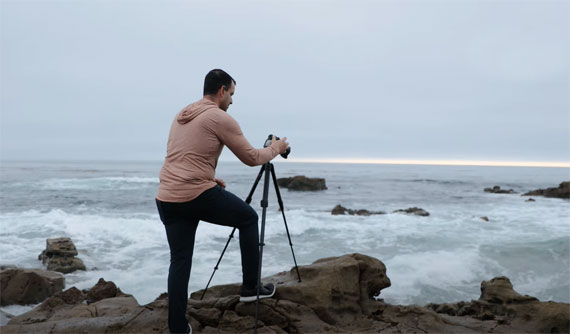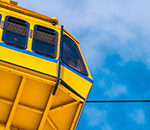Ever wondered how to capture movement in a still photograph? Shutter drag photography may just be the answer, allowing you to shoot it without compromising the clarity of your subject. Few subjects are as unpredictable and tempestuous as the ocean. In this video, Pye Jirsa, a pro photographer, shares his top shutter drag photography tips for oceanic landscapes.
Tip 1: Use a Wide-Angle Lens
Pye uses his Sony Alpha a7 IV camera for this shoot. However, which lens you use for shutter drag photography depends on your subject. In the case of landscape shots, Pye recommends a wide-angle lens. He uses a SIGMA 16-28mm lens, which increases the depth of field and width of his shots.
Tip 2: Keep Safe
A tripod is another must-have to maximize angles and keep your camera safe from the water. Before shooting, attach your camera to the tripod first, then look for the ideal vantage point. Preferably somewhere safe where a strong wave or rising water won’t hit, potentially damaging your gear or resulting in a painful fall.
Tip 3: Think About Composition
Composition is key, not only for getting that perfect shot but also capturing the movement of the water. Pye advises you to select a vantage point in the action that also maximizes the movement of the waves. Instead of aiming your camera out to the shore, head-on to incoming waves, aim for somewhere that’ll exaggerate sweeping motion. Ideally, place yourself on a rock further out. Then train your camera towards the shoreline to frame that left to right or right to left movement.
Tip 4: Maximize Effects With Shutter Speed
Shutter speed is the camera setting that’ll be doing the majority of the work when it comes to shutter drag photography. That’s why Pye recommends selecting a shutter speed first, then adjusting your aperture and ISO accordingly. Each different shutter speed will create its own effect, so choose depending on your preference. You can play around with different shutter speeds by doing some test photos. Then decide. Pye prefers a 1- to 2-second shutter speed unless he’s aiming for a “misty” or “foggy” water look.
There is no right or wrong, just choose the shutter speed that matches the look that you want to go for…
Tip 5: Minimize Camera Shake
As shutter drag photography is captured at slower shutter speeds, it’s vital you reduce camera shake. You can manually trigger a shot with a timer or use a shutter trigger app on your paired mobile device. Varying your frame rate also helps, allowing you to capture multiple photos in one go, which you can sort through later.
Conclusion
Creating magical effects in photos isn’t just possible during post-production editing. You can capture movement and more by just playing around with a few manual settings on your camera. Pye has plenty of pointers to share regarding shutter drag photography. Plus, other fun types of photography effects you can incorporate into your work.
Like This Article?
Don't Miss The Next One!
Join over 100,000 photographers of all experience levels who receive our free photography tips and articles to stay current:






Leave a Reply